We're an affiliate
We hope you love the products we recommend! Just so you know, we may collect a share of sales or other compensation from the links on this page at no additional cost to you. Thank you if you use our links, we really appreciate it!
The Great Danes are nicknamed the ‘gentle giants’ owing to their commanding outward appearance and pleasant disposition, even toward children.
Originating from Germany, these big dogs were initially used to hunt wild boars and other large game, but today they are highly favored for their stable temperament.
A properly trained Great Dane can thrive in many households so long as they receive attention and opportunities to play.
In this guide, we outlined everything you need to know about the Great Dane dog breed info including their origin, physical characteristics, temperament, and many more.
History of the Great Dane
The exact origin of the Great Dane is shrouded in mystery, although most scholars believe they originated from Germany.
Despite having the name ‘Dane’, these giant dogs have no historical association with Denmark. In retrospect, the ‘Great Dane’ is derived from the French phrase Grand Danois which means ‘Big Danish’.
Some experts believe this name was a creation of a French Naturalist who saw a Boarhound on his trip to Denmark and named him Grand Danois.
Many historians believe the Great Dane is a descendant of the English Mastiff and the Irish Wolfhound.
The hunters selectively bred the Great Dane in a bid to create a powerful dog who could pin down an equally powerful wild Boar until they showed up.
In the 18th century, some German aristocrats used the Great Dane to protect estates and carriages because of the initiating nature of these dogs.
In 1880, dog breeders and judges in Berlin decided to ban the name ‘Great Dane’ and instead used the name Deutsche Dogge which means German Dog.
The English and Italian-speaking countries did not approve of the new name but instead, the called the dog Alano, meaning Mastiff, and the English speakers still use the name Great Dane.
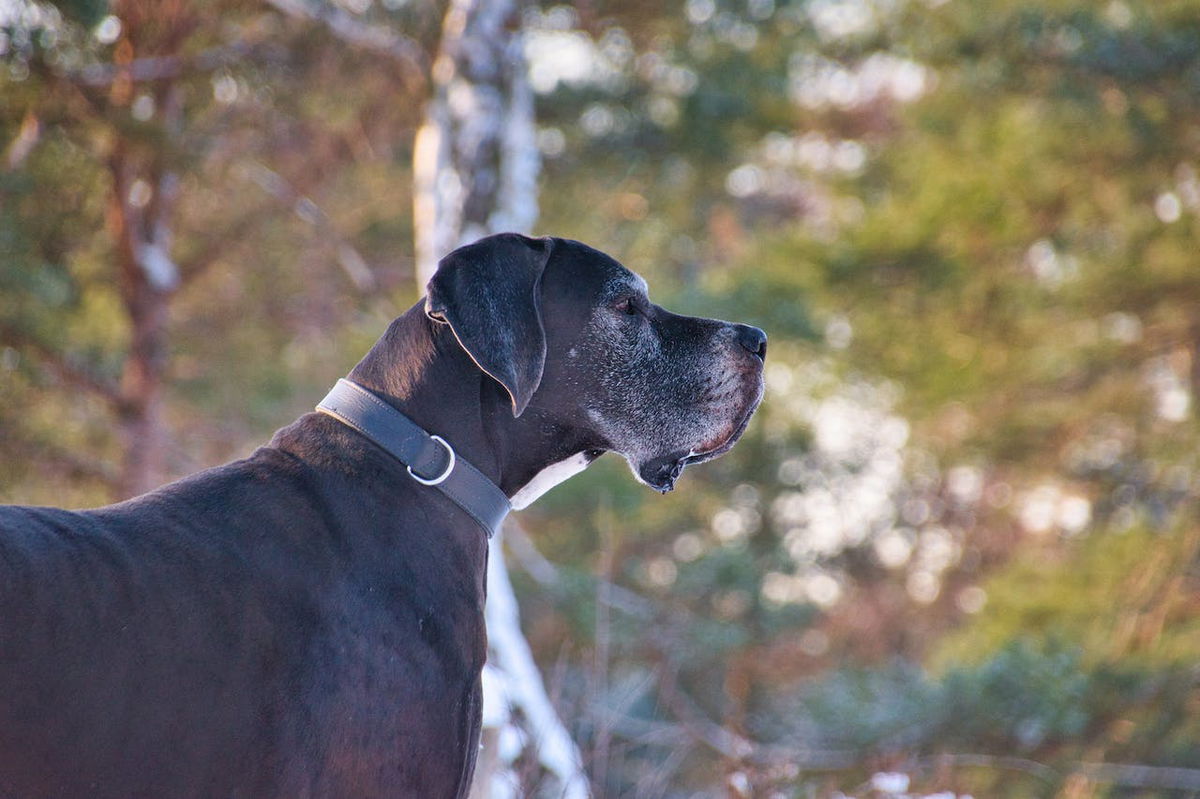
Through the early 19th century, the noblemen from Germany continued to fine-tune this large-size dog by refining its temperament.
The breeders succeeded in eliminating the ferocious temperaments, which made the modern-day Great Danes a lovely family companion.
There’s no known written record of when the first Great Danes were imported into the United States, but these dogs became popular in the US during the late 1800s.
The Great Dane Club of America was formed in 1899, two years after the American Kennel Club (AKC) recognized the breed.
5 Incredible Facts About the Great Danes
1. Great Danes were not originally bred in Denmark
Despite their name suggesting otherwise, the Great Danes are not originally from Denmark! Experts believe these large dogs were initially bred in Germany.
It is believed that they got their name from a French scientist who came across these massive dogs during his trip to Denmark.
2. Great Danes are gentle
Don’t let the intimidating posture and large size make you think negatively about these lovely dogs. Our modern-day Great Danes are bred for their friendly temperament.
German noblemen in the early 19th century are credited for fine-tuning these dogs’ aggressive temperament into a gentle personality fit for household keeping.
3. The famous Scooby Doo is a Great Dane
Joe Ruby Spears, the creator of Scooby Doo, chose to use a Great Dane for the iconic character because it was historically believed that these dogs could scare evil spirits and Ghosts.
Despite the massive size of Great Danes, the Cartoon movie helped popularize these gentle giants as potential lap dogs for animal lovers.
Great Danes have also made appearances in other great shows including starring as a doggy detective in Marmaduke.
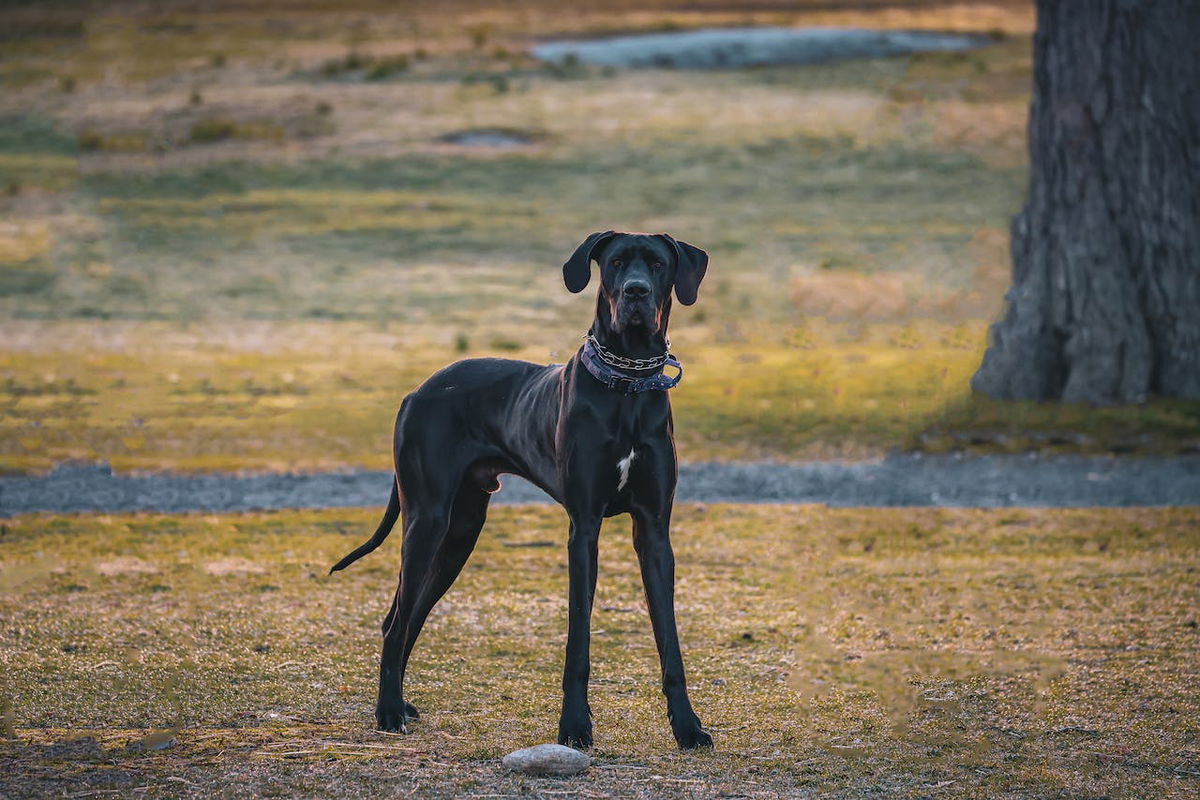
4. Great Danes hold a world record
The Great Danes hold a Guinness world record for the tallest dog breed in the world. A fully grown Great Dane can achieve a shoulder height of 32 inches with a healthy weight of over 100 pounds.
When standing on their hind limbs, both female and male Great Danes can dwarf many medium-sized humans.
5. Pennsylvania’s state dog is a Great Dane
Pennsylvania Commonwealth founder William Penn had a Great Dane, and in 1965, these former hunting dogs were designated as the official state dog symbol in Pennsylvania.
The office of the Governor at the Pennsylvania Capitol has a picture of Willian Penn and his Great Dane hanging in the reception room.
The Great Dane Puppies – What to Expect
If you’re planning to bring a Great Dane puppy into your home, you must be prepared to accommodate their potential massive size and needs to play.
A Great Dane puppy will require more food than small dog breeds like Yorkshire Terriers, so you should plan for more resources.
Right from a young age, you need to provide your Great Dane puppy with enough space to get active. It’s prudent to puppy-proof your home and invest in essential dog accessories.
Plan to keep your puppy indoors until they are inoculated. Exposing a puppy to outdoor conditions at a young age predisposes them to pathogens and harsh diseases.
The Great Dane’s Physical Characteristics
Size and Weight range
Great Danes are famed for their towering heights, which has earned them a reputation for being the tallest dog breed in the world.
A fully grown male Great Dane can grow to achieve an average shoulder height of anywhere between 30 -34 inches while a female falls within the range of 38 – 32 inches.
In addition to their massive heights, the Great Danes have a sturdy build, since their adult males can weigh anywhere between 120 – 200 pounds and their female counterparts 99 – 130 pounds.
Coat Color and Texture
Great Dane dogs have short coats that come in six official colors i.e. fawn (the most common), brindle, black, blue, harlequin (a white coat with irregular black spots), and mantle.
Excessive white color on the chest of brindle-, blue-, black-, and fawn-colored Great Danes is strongly discouraged.
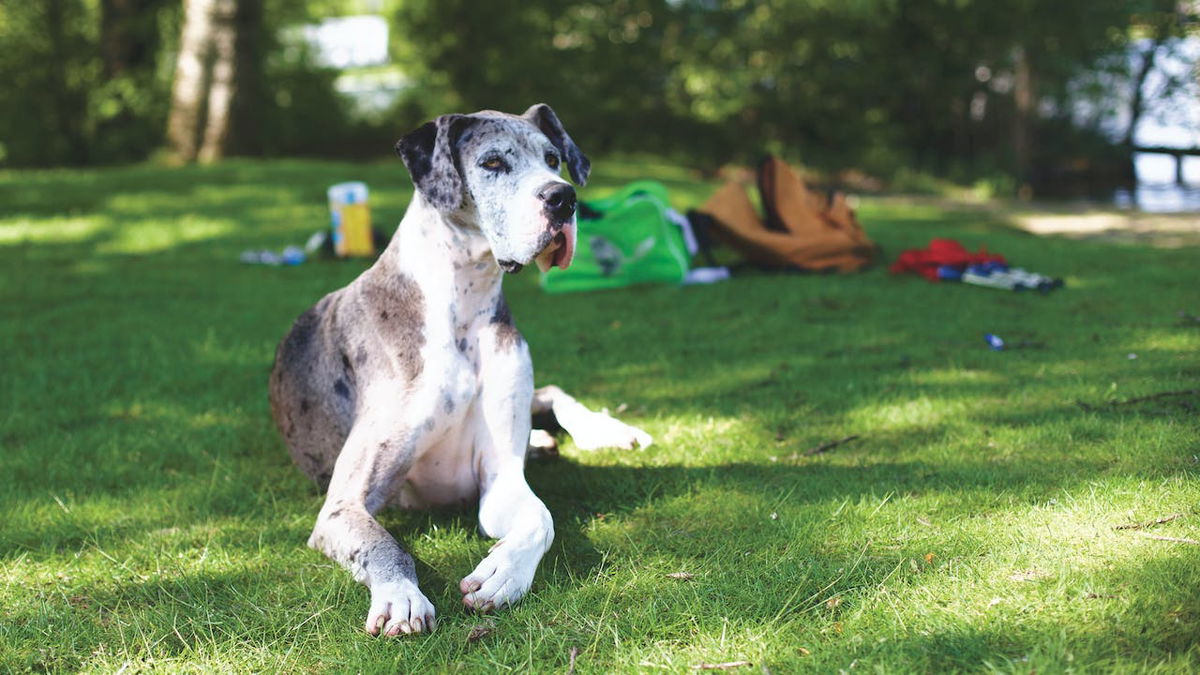
Many Kennel clubs around the world don’t accept blue merl, fawnequin, and white Danes since they can carry genetic conditions such as deafness and blindness.
The smooth textured single thick coat complements their sleek and muscular bodies. Despite their one-layered fur, these dogs are insulated from slightly harsh weather conditions.
Distinctive features
One of the top highlights of the Great Danes is their large square-shaped heads supported by a long muscular neck. They also have a deep and wide muzzle, which adds to their distinctive appearance.
Many Great Dane owners, especially in the US, crop their dog’s ears, although they are best left natural. Ear cropping is already banned in other countries because of animal welfare concerns.
Historically, the Great Dane’s ears were cropped to prevent them from getting torn by powerful wild boars’ tusks.
If you must have your Great Dane’s ears trimmed, it should only be done when the dog is 7 weeks old by a skilled veterinarian who is comfortable with the practice.
The Great Dane Temperament and Personality
Great Danes are called the ‘gentle giants’ for good reasons. These massive canines are gracious toward their human family complemented with regal temperaments.
These large dogs can form great playmates with children, and they generally get along with other dogs and pets provided they are properly introduced.
Modern-day Great Danes have a low prey drive so they are unlikely to chase your small household pets such as cats.

Despite their heritage as ferocious hunters, Great Danes were historically used to pin down large game, not small animals.
A properly trained Great Dane should have no problem thriving in many households. You don’t need to live in an extra-large home to share happy moments with these dogs.
Just make sure they have enough indoor space to feel contented and comfortable. You’ll also need additional resources to cater to an oversized dog breed.
The Great Dane Intelligence
Great Danes are an intelligent dog breed, thanks to their selective breeding to perform tasks that require good mental abilities.
Renowned canine psychologist Dr. Stanley Coren placed the Great Danes under average obedience and working intelligence based on his research.
Their impressive intelligence and eagerness to please their human handlers make them an easy-to-train breed.
The Great Dane Health and Lifespan
Average Lifespan
Like similar giant-sized canines, the average lifespan of Great Danes is between 8 – 10 years, which is shorter than the longevity of small, medium, and large-size breeds.
Some individual Great Danes can live for about 6 – 7 years, while only a few of them will attain the graceful age of 12 years and above.
Despite their relatively short life expectancy, you can be sure to enjoy every moment you’ll share with a Great Dane from puppyhood to old age.
Common health issues and genetic disorders
Despite being a healthy breed, Great Danes can be susceptible to several health problems and health conditions – most of which can be occasioned by poor breeding.
The following are some of the common health problems affecting Great Danes:
- Gastric Dilatation-Volvulus (GDV or Bloat)
- Dilated Cardiomyopathy (DCM)
- Hip Dysplasia
- Elbow Dysplasia
- Wobbler Syndrome
- VonWillebrands disease (VWD
Preventative measures for good health
As a responsible pet parent, you should strive to provide your Great Dane with all the care and attention they need to stay happy and healthy.
The following are some of the things you can do to sustain good health for your canine friend:
Before purchasing your dog from a breeder, you need to be certain that you’re working with a responsible person.
Trustworthy breeders are led by the breeding standards developed by their respective Kennel Clubs to prioritize the wellness and temperament of their breeding canine.
Puppies developed from these standards are less likely to carry defective genes or inherit genetic conditions.
Once you have your Great Dane at home, it’s important to plan regular vet visits for both physical examinations and medical tests.
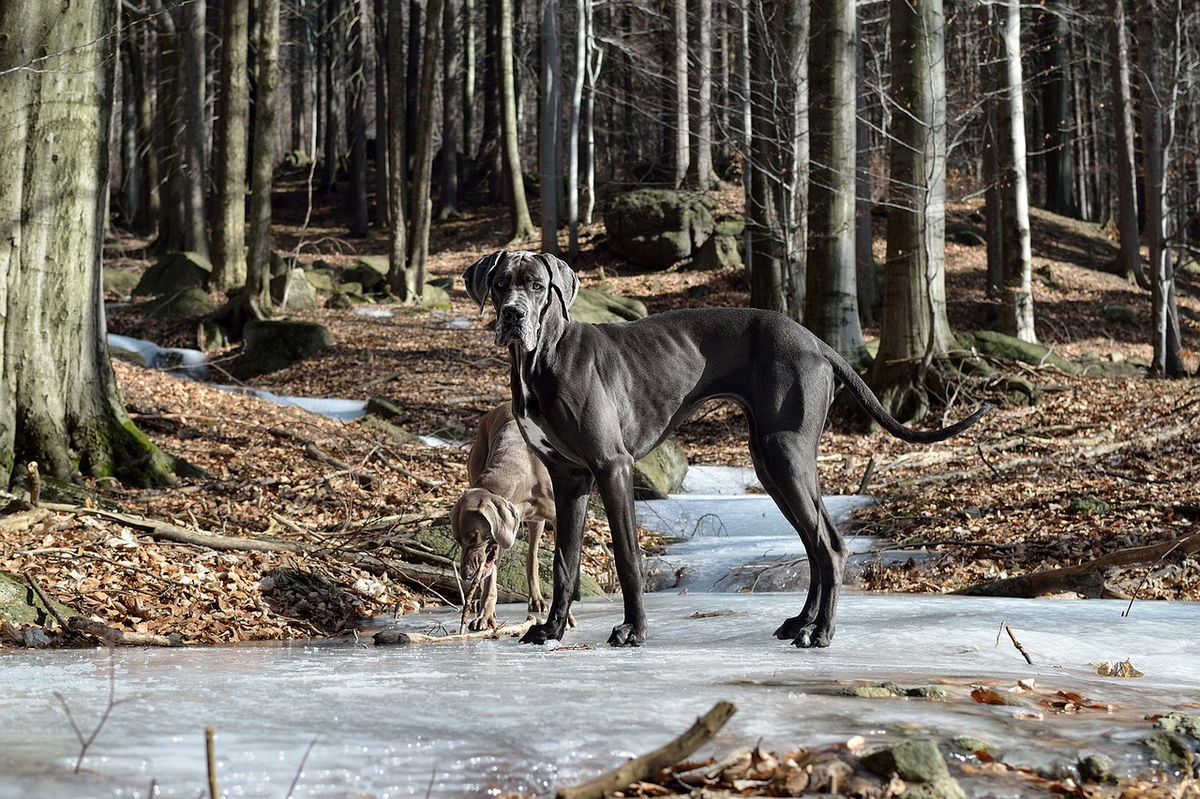
The health needs of oversized canines are slightly higher than that of small-breed dogs. So, you may want to look for a specialized vet who has experience with giant breed dogs.
While at the vet, make sure your Great Dane is inoculated against harmful canine diseases through the administration of core vaccines and boosters.
For a large-sized canine, you need to ensure they are well nourished with high-quality dog food for good health and strength.
In addition to good food, you need to provide enough activity for your Great Dane to burn off excess energy and maintain a healthy weight.
The Great Dane and Allergies
Despite being single-coated canines, Great Danes shed moderately throughout the year with excessive hair fall expected during the seasonal changes in fall and spring.
Allergy-prone individuals need to keep up with regular grooming and high hygiene practices to take care of pet allergens from Great Danes.
The Great Dane Grooming Needs
Keeping this big dog clean and hygienic requires regular weekly brushing and scheduled monthly washes at home.
In addition to removing dead hair and preventing matting, brushing your Great Dane with a slicker brush will help spread out natural oils on their skin, making the coat soft and shiny.
Washing should be done using canine-specific hypoallergenic shampoo and it shouldn’t be too frequent since excessive baths can strip the natural oils from the dog’s skin.
Because the Great Danes have large floppy ears, you should have routine monitoring and gentle cleaning to prevent infections.
We recommend using a soft cotton ball dampened with a pH-balanced ear-cleaning solution to remove dirt and debris from the ear flaps.
The big dog’s feet and toenails need regular checkups too. It’s prudent to keep your Great Dane’s nails trimmed to prevent foot problems and walking challenges.
Check between the paws when clipping your dog’s nails for debris, blisters, fleas, and other external parasites.
Brushing your dog’s teeth a couple of times a week is enough to maintain good oral hygiene by preventing dental disease and halitosis. Some people prefer using dental treats for oral care.
The Great Dane Exercise and Activity Levels
Daily activity needs
Since these dogs can grow very large, you should wait until they are 18 months old before starting them on intensive exercise.
This allows their bones and joints to develop well and accommodate their massive body structure and muscles.
When fully fit, Great Danes can be worked out for about 2 hours every day. You can split the period into manageable sessions in the morning and evening.
Suitable activities and games for The Great Danes
You can tag your Great Dane along for a morning walk or evening run around your neighborhood to keep up with their exercise demands.
These former boar hounds will enjoy a weekend trip to a nearby park both for physical exertion and bonding time with you.

Great Danes can enjoy obstacle training both outdoors and indoors. You can source for a dog-friendly park with obstacle courses or create one in your fenced yard.
Playing fetch or throwing a flying disc at a distance is a good physical activity for Great Danes. You’ll want to ensure there’s enough space with reasonable boundaries.
Since these dogs are huge, it may be a challenge to control them during outdoor exercise. You should always have your leash and avoid overstimulating your pup on such occasions.
Importance of mental stimulation
Engaging your elderly dog in brain-taxing games can help keep their minds sharp and reduce the likelihood of dementia and starving off depression.
Aside from engaging your dog’s mind, puzzle games and socialization programs can help improve your dog’s judgment and problem-solving skills.
Mental stimulation can help dogs reduce unwanted behaviors such as barking and chewing since it provides a better entertainment alternative.
The Great Dane Training and Socialization
Despite their genetical inclination to friendliness, you need to properly train your Great Dane and socialize them from a young age.
The oversized stature of this breed can be very difficult to manage if they are not well-trained in behavior and obedience.
While training your Great Dane, you should pay careful attention to prevent them from jumping or getting overstimulated.
Housetraining a Great Dane is easy because these big dogs prefer spending time with their human handlers rather than staying lonely in the yard.
It’s highly recommended to use a dog crate for giant breeds when crate training your Great Dane.
The Great Dane Living Conditions
The ‘Apollo’ of dogs will love you for providing a spacious living environment with a nice backyard for exercising and running.
You should fence the yard area to discourage your big dog from making that risky jump, since they can sustain potential injuries.
You can still own a Great Dane if you live in an apartment, but you should plan for daily outings with your dog for physical activity and socialization.
The Great Dane Diet and Nutrition
Nourishing your Great Dane should be a priority for their physical wellness and overall health. These large dogs can thrive on a high-quality dog food diet of 10 cups every day.
Ask your vet for tailored advice on the type of food and portion you can feed your dog depending on their individual circumstances.
We recommend providing large-breed puppy food for your Great Dane puppy to prevent them from growing too fast.
Since these big dogs are susceptible to bloat, plan to feed them smaller meals in multiple sessions a day rather than providing one large meal.
For this purpose, you can choose to use a slow feeder bowl (with inserts) to slow down your dog’s eating pace. Your vet may also recommend using elevated food bowls for a comfortable eating experience.
The Great Dane Pregnancy and litter size
The average gestation period of a Great Dane is about 63 days, and you can expect a litter of 8 – 10 puppies at a go, although this range can vary.
Tanya Dubbs’ two-year-old Great Dane, Namine, gave birth to a whopping 21 puppies in a whelping process that lasted 27 hours.
Keeping your pregnant dog in a stress-free condition and providing adequate prenatal care is essential throughout the pregnancy journey and whelping process.
Conclusion
The Great Dane dog breed is a loyal family companion with a combined attributes from other popular large dog breeds.
These big dogs have the sweet temperament of the Greyhound covered in the imposing stature of the Mastiff, and towering with the height of the Irish Wolfhound.
Great Danes need an owner who can consistently train them while setting aside quality time for bonding and socialization.
Laura is the founder of Furs'n'Paws. She is a also a pet writer and expert with more than 20 years of experience of working with dogs and cats. She developed a very strong love for animals at a young age. Her passion led her to establish a thriving pet sitting and dog walking business in Dubai. As an expert in pet training, behavior, and nutrition, Laura is committed to helping pet owners and pet lovers by offering high-quality information on a wide range of topics.


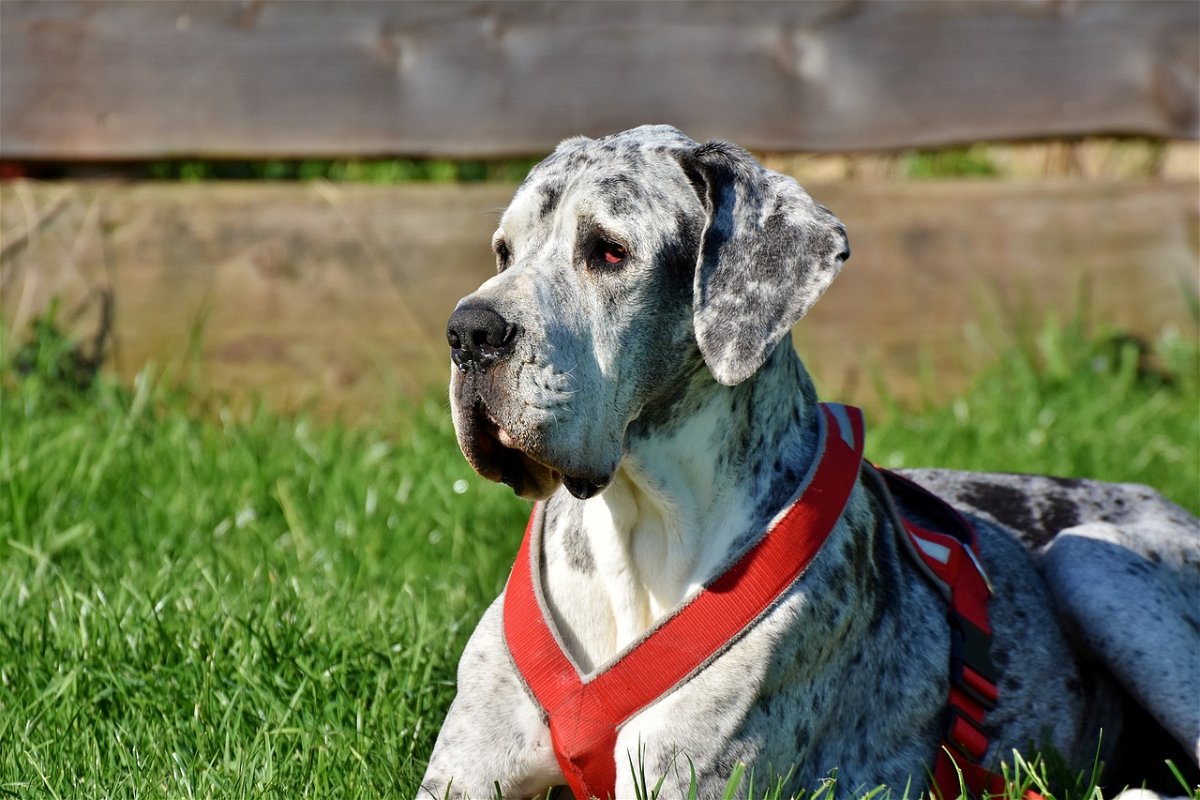
No responses yet